Plant training is an often overlooked aspect of cannabis growing by new growers. Yet, it’s one of the best ways to improve plant yields besides using crafted cannabis nutrients. The difference between a plant left to grow on its own and one trained to grow efficiently is like night and day. So, how exactly does one “train” a Cannabis plant?
Training cannabis refers to methods that manipulate the shape and growth patterns of your plant.
Cannabis naturally wants to grow one large bud at the end of each branch, this is called the cola. The main stem always grows the largest cola of the plant.
Smaller branches along the main stalk will grow upward towards a light source. If left to grow outdoors without training the plant develops a bushy shape. Plants grown indoors will grow pointy like a Christmas tree since their only light source is stationary and directly above.
Auxin is the chemical responsible for the growth of buds, with the majority of it being created where the light hits the node. The main cola naturally contains a high quantity of auxin, as it is at the top. By adjusting parts of the plant to get more light, you can force auxin to be produced in higher quantities in areas that wouldn’t normally get as much.
There are quite a few techniques available to manipulate these mechanisms and can be divided into two major categories. Low stress and high stress.
Low Stress Training
Low Stress Training (LST) is about guiding your plant, gently and without damage, into a better shape. This can be achieved by patiently securing branches so they grow outwards from the main stem.
Bending & Tying
As the main stem grows upwards towards a light source you can gently tie it down so that it points horizontally or towards the ground. This allows more direct light to get to the main stalk and lower branches. More light means bigger bud sites and colas.
By bending the main stem a little every week, you can slowly force a plant to grow horizontally.
Branches off the main stem can also start to compete for light, so it may be necessary to tie them down as well.
The goal of bending or tying your branches down is to develop an even canopy. The canopy is the uppermost area of your plant where the light hits it. If all the colas are at the same hight then they’re getting equal levels of light energy. Very efficient.
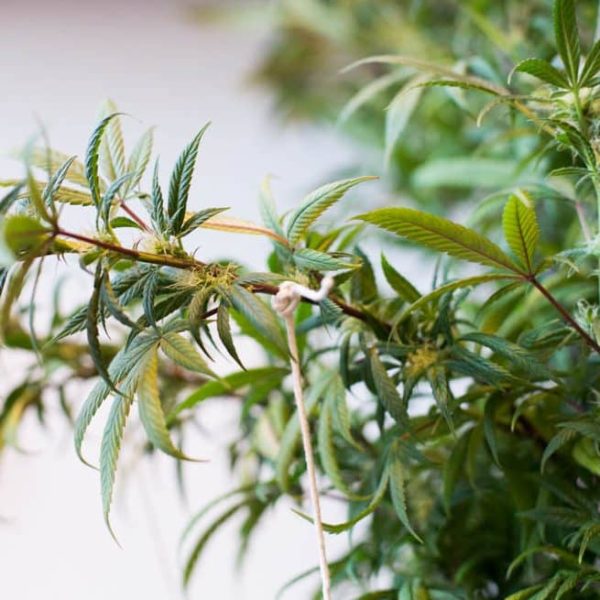
A bushy plant benefits from having its lower branches tied down and away from the main stem. Now the future bud sites can receive a little more light energy.
Screen of Green Method
Otherwise known as SCROG. This method operates under similar principles as simple bending and tying but is slightly easier and supports the plant better.
Suspend some netting over your plant and weave each branch through its own hole. The netting will spread out the branches so they aren’t competing for light. This will allow for an incredibly efficient light spread across the cannabis canopy.
The netting should have holes that are 4 to 6 inches big.
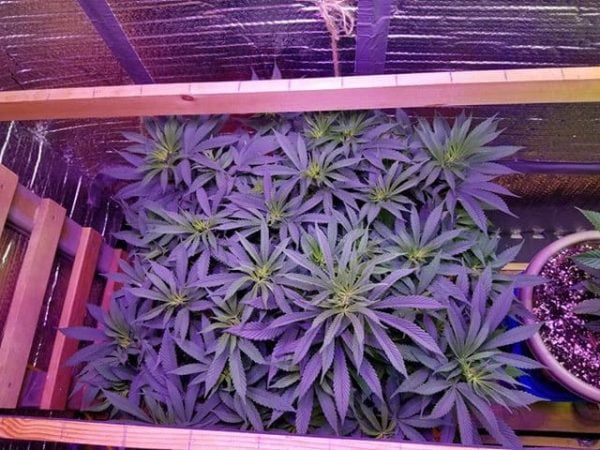
A very even canopy on a plant grown with a SCROG net.
High Stress Training
These methods differ from the previous in that they damage the plant in very specific ways. There is more risk involved with these training techniques, but when done correctly they can greatly increase the final yield.
Stressing your plants will slow their growth since the plant will need time to recover.
Topping & FIM
Topping is probably the simplest method available to increase a plant’s yield. Simply cut off the top new growth of your plant before it begins to flower. Over time the stalk will then split off into two directions, creating two branches with main colas.
The reason this occurs is that auxin hormones in the new growth are removed. More of these hormones will be sent towards the cutting and trick the plant into growing two or more branches at that site.
The best time to top your plants is early in the vegetative phase of growth. The 4th or 5th node is usually the most common one to clip off.
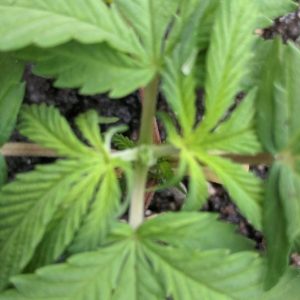
This plant was recently topped. The newest growth was clipped off with a clean pair of scissors.
You can find a more detailed article on topping cannabis here.
The same plant developed 3 main stems instead of just one. Topping usually causes two main branches to form.
If you leave a small amount of the node you may end up with 3 or 4 main branches. This technique is called FIM (F$#% I Missed).
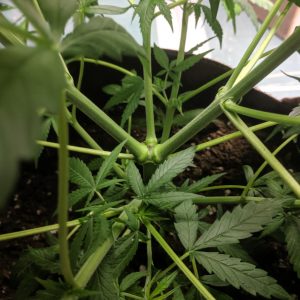
Defoliation
This is another simple technique that is done near the end of the vegetative stage of growth.
Removing leaves allows more light and air to travel through the plant. Defoliation also helps focus plant energy on the larger bud sites. By removing a few handfuls of leaves that aren’t getting much light, you shock the plant into focusing energy on the bud sites that are receiving direct light.
This technique may cause a fair amount of shock to the plant. Removing too many leaves at once can greatly stunt growth. It will depend on the size of your plant, but you can start by removing the lower 20% of the leaves and seeing how the plant reacts.
You shouldn’t be defoliating your plant while it’s in the flowering stage. Cannabis is temperamental during flower and doing so could drastically stunt the growth of your plant
Defoliation isn’t necessary for outdoor grows because they get light from all angles. The leaves also act as protection from the elements and outdoor pests.
This bushy plant needed many leaves to be removed to allow better airflow and make it easier to manage. The branches will be tied down as well.
Cats are very attracted to cannabis plants and sometimes enjoy snacking on the leaves. This is fairly harmless for the cat but it might be a good idea to keep the plant off-limits to your furry friends.
Training Autoflowering Cannabis
Autoflower cannabis strains have a very specific timeline. They will usually go from seed to harvest in 2 to 3 months.
Stressing autoflowering strains can greatly reduce their yield. High stress will slow growth and the auto plant will have less time to catch up.
New growers should stick to low stress training techniques when it comes to autos.
Remember, training your plant is optional. If you don’t feel confident in your skills, then there’s no reason to risk the health of your cannabis. Please take the time to share this article with anyone who may find it useful.
If you have a question feel free to contact us or leave a comment below.
If you want to learn even more about growing good cannabis, we offer a free 40+ page guide full of images.
Now available on Amazon.
Sign up for our newsletter and download the digital copy today!
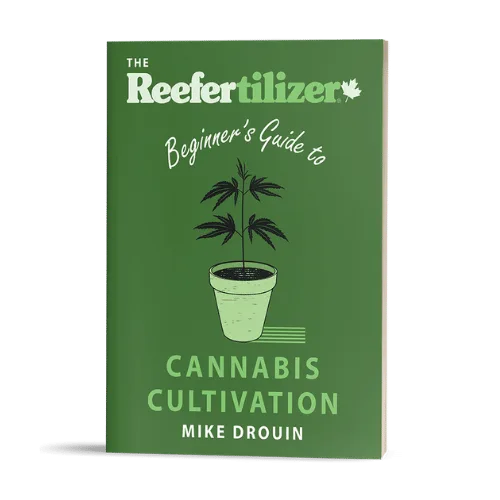
This guide will answer many questions about growing cannabis, like the following...
Selecting Seeds
Identify and Correct Problems
Maximize Yield
Much More...
Get a Chance to INSTANTLY WIN a Reefertilizer Nutrient Kit When You Sign Up.
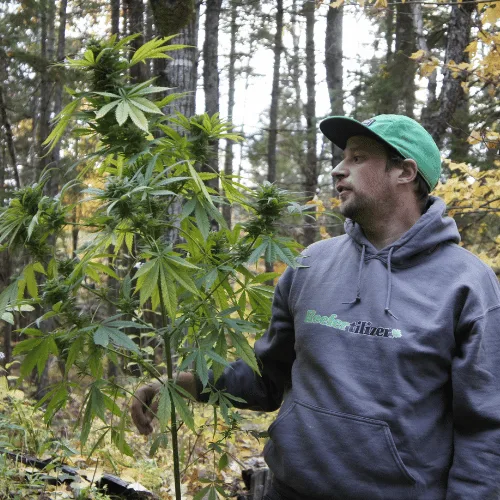
Mike Drouin is the co-founder of Reefertilizer. He’s an experienced craft cannabis grower and a writer of many articles regarding the process. Mike lives on Vancouver Island and enjoys cycling and camping and will sometimes combine the two.

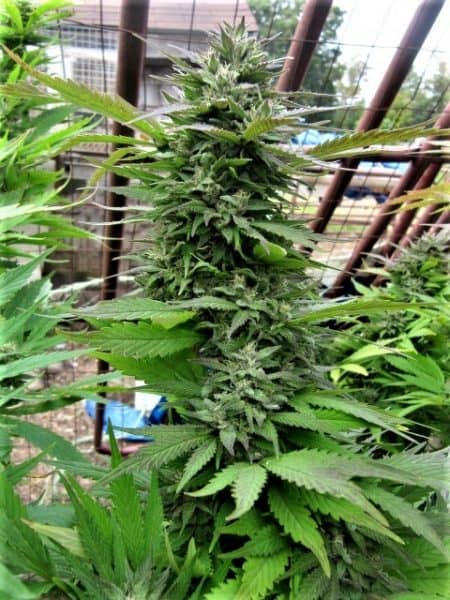
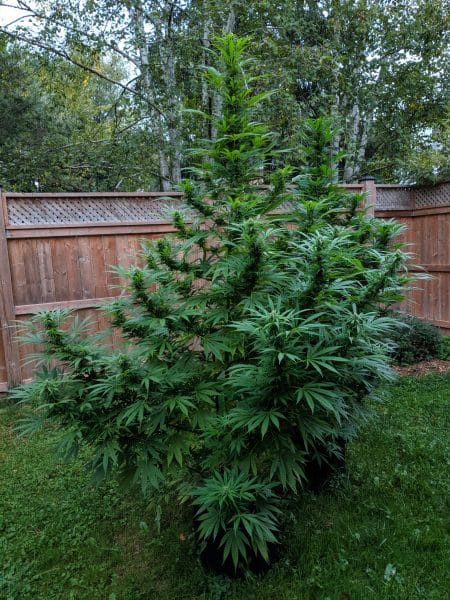
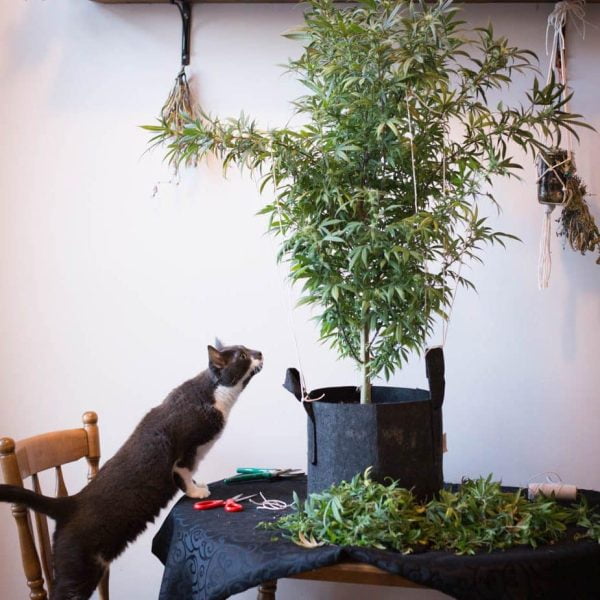
Comments are closed.